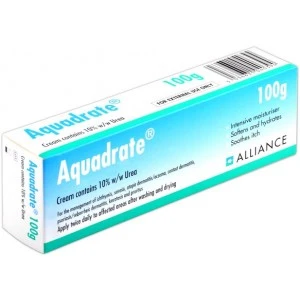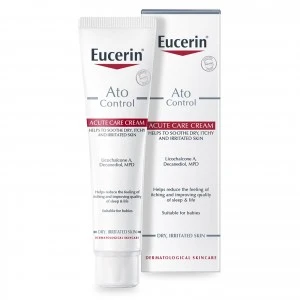Cracked heel
When the skin on the heel dries out, it can crack and become uncomfortable or painful. If left untreated, broken skin can become infected.
Aquadrate
- Easy twice daily application
- Locks in moisture
- Provides protective barrier
Eucerin Ato Control
- Retains skin moisture
- Provides a protective hydrating barrier
- Easy to apply to skin
What are cracked heels?
Cracked heels, also known as heel fissures, are a common foot problem. The condition is typically caused by a lack of moisture in the skin of the heels.
Heel skin does not have sebaceous glands. These glands produce the protective oils which keep the skin hydrated. Without this protective layer, the skin around the heel can become dry and prone to brittleness. When pressure is applied, the skin splits and cracks - these cracks are also known as fissures. These fissures can vary in length and depth.
Symptoms of cracked heels include:
- An infection (cellulitis)
- Bleeding
- Cracked or broken skin around the heel
- Discolouration of the skin
- Dry, hardened skin on the heel
- Flaking of heel skin
- Foot ulcers
- Inflammation and redness around the heel
- Itching skin around the heel
- Loss of sensation in the heel
- Visible lines and cracks along the skin
The condition itself is not severe, but fissures increase the risk of infections. Cracked heels can be painful when pressure is applied to the heel when walking or standing. In some cases, heel fissures can bleed. If your cracks bleed, ask a pharmacist about bandages. If you experience pain in the heels for more than a few days, you should arrange for an appointment to see your GP. Your GP may refer you to a podiatrist - this is a doctor who specialises in the care of feet.
What causes cracked heels
Cracked heels typically begin as dry skin, which forms a protective layer over the sensitive skin underneath. The dry skin which forms on the surface is often called a callus. A callus often develops where repeated friction occurs, such as the place where a shoe has been rubbing against your foot.
Factors which can increase the risk of heels cracking include:
- Cold weather
- Diabetes
- General dehydration
- Genetics
- Not using a moisturiser on the feet
- Obesity
- Using abrasive materials to scrub feet
- Washing too frequently or for too long
- Washing with harsh soaps
- Wearing ill-fitting shoes, which can rub
How can I prevent cracked heels?
Cracked heels can be prevented by making small changes to your lifestyle.
Wearing shoes which fit prevents friction between your feet and footwear. Wearing cotton socks with your shoes can also prevent them from rubbing and keep you comfortable. Avoid open-back shoes such as sandals or flip-flops, as these can exacerbate your symptoms. Closed-back shoes with adequate padding are ideal.
When washing, avoid spending too long in the bath or shower. Avoid washing more than once a day. Standing for long periods in damp environments, such as a bathroom, can increase your risk of developing cracked heels. Clean your feet with a soft sponge and use a gentle soap. Avoid friction by dabbing your feet dry after a shower.
Changing your diet and losing weight can also benefit your skin and reduce the stress applied to the heel, thereby decreasing the chances of developing dry skin or cracked heels.
If you are diabetic, you should take extra care of your feet. Diabetes can decrease blood flow to the feet and cause nerve damage. The condition can also increase the risk of infection in the feet. Keeping your sugar levels under control can also help to improve your skin and lower your risk of infection.
Using a moisturiser can prevent dry skin. You can also use moisturising soaps in the bath or shower.
What treatments are available for cracked heels?
We offer two creams for dry skin called Eucerin Intensive and Aquadrate. Both of these treatments contain an emollient known as urea. When absorbed by the skin, urea binds to water, preventing it from evaporating and keeping the skin hydrated.
© 2013 - 2025 Al Muhsineen Limited. All Rights Reserved. Registered Pharmacy: 34 Halliwell Road, Bolton BL1 8RL. Registered Office: 254 First Floor, Shearbrow, Blackburn, England, BB1 8DS








